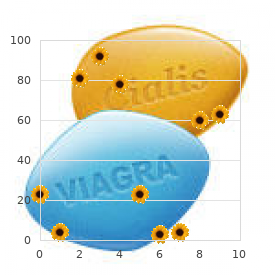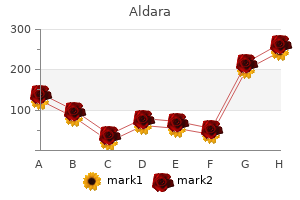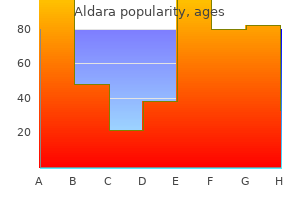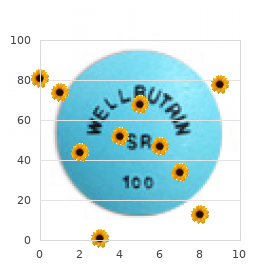





|
STUDENT DIGITAL NEWSLETTER ALAGAPPA INSTITUTIONS |

|
Julia K. Barbarisi MD
Leaving aside any issues related to differences in study oversight or reporting acne 10 gel aldara 5percent low cost, the populations of these studies may differ from U acne wiki safe aldara 5percent. To the extent that the probability of specific outcomes of interest may differ between populations because of differences in genetic risk acne 4 hour generic aldara 5percent mastercard, exposures to other factors affecting risk acne 70 off discount aldara 5percent, or non-biological factors such as access to care, there may be substantial differences in estimates of absolute risk differences. Access to infertility diagnosis and treatment varies across countries, and certainly within the United States. Differences in access to care may lead to differences in the spectrum of severity of "disease" for U. Socioeconomic status may also potentially affect some important outcomes independently of any specific treatment-for example, neurodevelopmental outcomes such as specific learning skills may be strongly correlated with parental socioeconomic status. The long lag time between exposure to infertility treatment and the potential development of longer term outcomes such as cancer means that data available today necessarily reflect women exposed to treatments at least 10 years in the past; even if the specific exposure is similar, there may be differences between past and current practice in potentially important attributes such as dosage, timing, patient selection criteria, use of adjunctive treatments, etc. Because of this phenomenon, there is likely to always be some unresolvable uncertainty about long-term outcomes for both parents undergoing current infertility treatments and their children. Research Recommendations In an era of constrained resources, future clinical research, especially comparative effectiveness research-which helps resolve current uncertainties regarding clinical or policy decisions-should receive priority. In part because of the diversity of causes and treatment options, it is difficult to make specific recommendations for specific topics. Before setting a specific agenda for future research in infertility, we believe a more general approach to identifying priorities would be helpful. Achieving consensus on the relative priority of specific outcomes, incorporating the perspective of multiple stakeholders (similar to the approach used for developing a research agenda for comparative effectiveness research for uterine fibroids. As part of this consensus process, additional areas of discussion include: Formal consideration of the limits of acceptability for specific quantitative harms. This is particularly important because there are significant methodological challenges to the use of "standard" measures such as quality-adjusted life expectancy in the setting of infertility treatment. However, the major limitation of the database in the past has been that data are only published on a per-cycle, rather than percouple, basis. Recently the database methods have changed and now they are publicly reporting the cumulative success rate per patient. However, given the diversity of infertility causes and treatments, there is considerable residual uncertainty about the optimal treatment options for specific patients. Infertility and impaired fecundity in the United States, 1982-2010: data from the National Survey of Family Growth. Infertility, infertility treatment, and achievement of pregnancy in female survivors of childhood cancer: a report from the Childhood Cancer Survivor Study cohort. Quality of life, fertility concerns, and behavioral health outcomes in younger breast cancer survivors: a systematic review. Live birth is the correct outcome for clinical trials evaluating therapy for the infertile couple. The worldwide incidence of preterm birth: a systematic review of maternal mortality and morbidity. Infertility and the risk of adverse pregnancy outcomes: a systematic review and metaanalysis. Tubal factor infertility and perinatal risk after assisted reproductive technology. Are there subtle genome-wide epigenetic alterations in normal offspring conceived by assisted reproductive technologies? Infertility treatment and fertility-specific distress: A longitudinal analysis of a population-based sample of U. Economics may not explain Hispanic underutilization of assisted reproductive technology services. Race matters: a systematic review of racial/ethnic disparity in Society for Assisted Reproductive Technology reported outcomes. Impact of Male and Female Weight, Smoking, and Intercourse Frequency on Live Birth in Women With Polycystic Ovary Syndrome. Metformin reduces risk of ovarian hyperstimulation syndrome in patients with polycystic ovary syndrome during gonadotropin-stimulated in vitro fertilization cycles: a randomized, controlled trial. Laparoscopic ovarian diathermy after clomiphene failure in polycystic ovary syndrome: is it worthwhile? The impact of a gonadotropin-releasing hormone antagonist on gonadotropin ovulation induction cycles in women with polycystic ovary syndrome: a prospective randomized study. Exposure to human chorionic gonadotropin during in vitro maturation does not improve the maturation rate and developmental potential of immature oocytes from patients with polycystic ovary syndrome. Randomized Controlled Trial of Preconception Interventions in Infertile Women With Polycystic Ovary Syndrome. Myo-inositol administration positively effects ovulation induction and intrauterine insemination in patients with polycystic ovary syndrome: a prospective, controlled, randomized trial. Preterm Delivery and Low Birth Weight Among Neonates Conceived With Intracytoplasmic Sperm Injection Compared With Conventional In Vitro Fertilization. Effect of Acupuncture and Clomiphene in Chinese Women With Polycystic Ovary Syndrome: A Randomized Clinical Trial. Methylprednisolone for prevention of ovarian hyperstimulation syndrome in patients with polycystic ovarian syndrome undergoing in-vitro fertilisation: a randomised controlled trial. Clomiphene citrate plus cabergoline versus clomiphene citrate for induction of ovulation in infertile euprolactinemic patients with polycystic ovary syndrome: A randomized clinical trial. Postlaparoscopic oral contraceptive combined with Chinese herbal mixture in treatment of infertility and pain associated with minimal or mild endometriosis: a randomized controlled trial. Timelimited hydrotubation combined with clomiphene citrate treatment for unexplained infertility. Effect of luteal phase support with vaginal progesterone in intrauterine insemination cycles with regard to follicular response: a prospective randomized study. Management of the first in vitro fertilization cycle for unexplained infertility: a costeffectiveness analysis of split in vitro fertilization-intracytoplasmic sperm injection. Advantages of recombinant folliclestimulating hormone over human menopausal gonadotropin for ovarian stimulation in intrauterine insemination: a randomized clinical trial in unexplained infertility. Clomiphene citrate versus high doses of gonadotropins for in vitro fertilisation in women with compromised ovarian reserve: a randomised controlled non-inferiority trial. Clomifene citrate or unstimulated intrauterine insemination compared with expectant management for unexplained infertility: pragmatic randomised controlled trial. Randomized controlled trial comparing superovulation with letrozole versus recombinant follicle-stimulating hormone combined with intrauterine insemination for couples with unexplained infertility who had failed clomiphene citrate stimulation and intrauterine insemination. Prospective randomized study for hydrotubation with or without lidocaine before intrauterine insemination in unexplained infertility. The effect of luteal phase support on pregnancy rates of the stimulated intrauterine insemination cycles in couples with unexplained infertility. Assisted reproductive technology and perinatal outcomes: conventional versus discordant-sibling design. Use of Letrozole versus clomiphene-estradiol for treating infertile women with unexplained infertility not responding well to clomiphene alone, comparative study. Comparison of modified agonist, mild-stimulation and antagonist protocols for in vitro fertilization in patients with diminished ovarian reserve. Diagnostic and remedial capability of transcervical falloposcopy in conjunction with laparoscopy. Intracytoplasmic morphologically selected sperm injection versus conventional intracytoplasmic sperm injection: a randomized controlled trial. Trends in use of and reproductive outcomes associated with intracytoplasmic sperm injection. Clinical outcome of intracytoplasmic injection of spermatozoa morphologically selected under high magnification: a prospective randomized study. Moderate aerobic exercise training for improving reproductive function in infertile patients: A randomized controlled trial. Complications related to ovarian stimulation and oocyte retrieval in 4052 oocyte donor cycles. Triggering with human chorionic gonadotropin or a gonadotropin-releasing hormone agonist in gonadotropin-releasing hormone antagonist-treated oocyte donor cycles: findings of a large retrospective cohort study. Effects of fertility drugs on cancers other than breast and gynecologic malignancies. Outcomes of in vitro fertilization with preimplantation genetic diagnosis: an analysis of the United States Assisted Reproductive Technology Surveillance Data, 2011-2012. Risks of ovarian, breast, and corpus uteri cancer in women treated with assisted reproductive technology in Great Britain, 1991-2010: data linkage study including 2. Access to and use of infertility services in the United States: framing the challenges.



And that is precisely what Personalised Healthcare stands for: these medicines have not been designed for individual patients but for use in therapies tailored to the needs <of well-defined patient subgroups skin care manufacturers generic aldara 5percent mastercard. There are twelve versions of the brochure acne inversa images order 5percent aldara mastercard, all identical except for the colour of the inside front and back covers acne 5 pocket jeans cheap aldara 5percent on line. However acne 22 years old generic aldara 5percent, the same medication may not have the desired effect in other patient subgroups (despite the same diagnosis). Roche Personalised Healthcare 1 fitting treatments to different groups of patients. Personalised Healthcare means Our vision of Personalised Healthcare is becoming reality. This was the first stage in its commitment to transforming the vision into reality now. Our efforts are geared to giving people with dangerous diseases genuine prospects for a better and a longer life. My most important job is to provide our researchers with an environment that enables them to turn scientific progress into new, accurately targeted treatments as effectively as possible. They are proof positive that Personalised Healthcare is the ideal strategy, both for patients and for Roche itself. It calls for sturdy, sustainable business models that can keep pace with changing circumstances. Accordingly, it is essential for us to optimise the riskbenefit ratio of therapies improve the costbenefit ratio of treatments come up with highly differentiated medicines bringing clearly defined benefits for patients. This is why Roche has opted for this approach to the development of therapies for currently unmet medical needs, devising the Personalised Healthcare strategy to cover the demands of the present and the future. The strategies employed by Roche to respond to these new challenges are innovation drawing upon our core businesses Pharmaceuticals and Diagnostics to focus exclusively on benefits for patients. The aim of Personalised Healthcare is to make modern medical care more systematic and more effective. It enables us to identify differences between groups of patients and improve our understanding of sub-categories of disease. This knowledge can be used (a) to find the best targets for new medicines and (b) to come up with new biomarkers and diagnostic tests. In devising new methods for diagnosis and new medicines for use in the fight against diseases, we apply the latest findings of modern molecular science. For years now, we have been consistently applying the Personalised Healthcare strategy at all stages of development. Our crucial edge comes from interweaving the expertise of our two Pharmaceuticals and Diagnostics Divisions and drawing upon it throughout the development process, all the way up to approval for new diagnostic tests or new medicines. Very early on, we had the foresight to invest in innovative new approaches like genetic engineering and related molecular sciences, though at the time they were still in their infancy. By combining the specialist knowledge we have in molecular biology with technology we are able to press ahead with Personalised Healthcare at an unrivalled pace. Our unremitting concern is to improve on what we have achieved so far and to find solutions for the unanswered medical questions of today. Personalised Healthcare means the right therapy for the right group of patients at the right time. Patients with same syndrome Group of patients with the same syndrome One-size-fits-all approach Targeted therapy 6 Roche Personalised Healthcare 7 Why Personalised Healthcare is so important `It is more important to know what sort of person has a disease than what sort of disease a person has. Some 2, 400 years after Hippocrates, it is driving a genuine revolution based on the scientific realisation that individuals are different and so are diseases. Personalised Healthcare aims to provide targeted therapies tailored to the inherited or acquired risk factors displayed by different subgroups of patients. The foundations for this new, highly sensitive approach are the findings produced by modern research; research that is able to trace the origins of a disease back to its molecular causes and thus supply spectacular insights into the complexity of the factors that lead to disease. The research work of the last few years has many important successes to its credit. Headlong progress in the sciences related to molecular biology genetics, genomics, proteomics is broadening the foundations for progress of this kind, so it is safe to predict that in the near future many more patients will benefit from such new approaches. Genetics Genetics is the study of the regularities and the material foundations involved in the way hereditary features take shape and hereditary systems (genes) are passed on to the next generation. Proteomics Proteomics is the study of the form, function and interactions of proteins in an organism. Unlike the relatively static genome, the proteome is a dynamic system likely to alter its qualitative and quantitative protein composition in response to changing conditions (environmental factors, temperature, gene expression, administration of active substances, etc. For example, a caterpillar and the butterfly it changes into have the same genome. Genomics Genomics is the term used for research on the form, function and interaction of genes in an organism. Today, findings from new branches of research like genomics or proteomics enable researchers to refine their understanding of diseases at the molecular level. This is the basis for innovative strategies combining new diagnostic procedures and ongoing biotechnological progress to fight diseases more effectively than ever before. Molecular diagnosis, targeted therapy: cancer as a case in point One important insight derived from molecular research is that cancer is not just cancer. The term covers some 250 different conditions, almost all of which affect body tissues. While these conditions display major differences in their symptoms and delayed effects, there is one thing that breast, lung, intestinal or skin cancer all have in common: they are ultimately genetic diseases. Some genetic defects triggering cancer are inherited, others are acquired in the course of our lives as a result of factors that encourage cancer like tobacco smoke, radiation or viruses. Additionally, life-style and psychological factors can contribute to the development of cancer. But if there are alterations to genes that are particularly vital for the life of the cell, if the defects cannot be repaired or compensated for, or if a large number of genetic defects accumulate in the course of time, then cancer may be the result. Such lasting changes interfere with important cellular mechanisms that normally regulate and control how cells proliferate. Things become even more serious when these degenerate cells find their way into the circulation or the lymph system and ultimately establish themselves elsewhere in the body as secondary tumours, also known as metastases. A more recent example is a gene that has been found in a mutated form in about 50 percent of all cases of skin cancer and in approximately eight percent of all solid tumours. Only two years later the sequencing was complete and the full version was published. The aim of this integrated international research venture is to detect all the mutations that cause the 50 most frequent kinds of cancer in humans. Instead the focus will be on the respective molecular blueprint and tumours with specific mutations that can be diagnosed with gene-based methods and treated with specifically targeted medicines, regardless of the part of the body that has been affected. A chain of defects at the molecular level from gene to protein can cause diseases. Modern molecular biologists are convinced that there is no disease in which defective genes and their subsequent signaling pathways are not involved in some way. This improved understanding of disease mechanisms allows the development of targeted treatments, resulting in efficiency increases in healthcare. Stomach cancer can develop in the tissue of the stomach itself or in the junction between the oesophagus and the stomach. If the disease spreads to the rest of the body in the form of metastases (secondary tumours), it is referred to as advanced or metastatic stomach cancer. Stomach cancer is the fourth most common kind of cancer worldwide and the second cause of all cancer deaths. The disease is more widespread in Asia than in the West, men are more frequently affected than women. Two main methods are endoscopy, in which a thin tube is introduced into the stomach via the oesophagus, and radiological examination. More recently, tissue diagnostics has become one of the most important procedures of this kind. In about one of six stomach cancer patients, excess amounts of this protein form on the surface of the tumour cells and encourage their proliferation. Stomach cancer is the fourth most common kind of cancer worldwide How is stomach cancer normally treated?

The relationship between alcohol use and violence in a nationally representative longitudinal sample acne 70 off order aldara 5percent line. Violence in the city: Understanding and supporting community responses to urban violence skin care with retinol discount aldara 5percent with mastercard. Gender differences in psychopathology acne medication prescription aldara 5percent without a prescription, functional impairment skin care coconut oil aldara 5percent, and familial risk factors among adjudicated delinquents. Differences by Sexual Minority Status in Relationship Abuse and Sexual and Reproductive Health Among Adolescent Females. Differences in Adolescent Relationship Abuse Perpetration and GenderInequitable Attitudes by Sport Among Male High School Athletes. Effects of news media messages about mass shootings on attitudes toward persons with serious mental illness and public support for gun control policies. The longitudinal relation between academic/cognitive skills and externalizing behavior problems in preschool children. Reproductive coercion: Connecting the dots between partner violence and unintended pregnancy. Deliberate Self-Harm, Substance Use, and Negative Affect in Nonclinical Samples: A Systematic Review. Efficacy of an intervention to reduce the use of media violence and aggression: An experimental evaluation with adolescents in Germany. Adverse Childhood Experiences and Adolescent Well-being: Do Protective Factors Matter? Neighborhood inequality, collective efficacy, and the spatial ndynamics of urban violence. The dark side of girlhood: recent trends, risk factors and trajectories to aggression and violence. Sexual victimization of youth with a physical disability: An examination of prevalence rates, and risk and protective factors. Effects of Trauma on Students: Early Intervention Through the Cognitive Behavioral Intervention for Trauma in Schools. Variation in Pediatric and Adolescent Firearm Mortality Rates in Rural and Urban U. Preventing unintentional pediatric injuries: a tailored intervention for parents and providers. Homicide Trends in the United States, 1980-2008: Annual Rates for 2009 and 2010 (No. Screening women for intimate partner violence and eldery and vulenrable adults for abuse: Systematic review to update the 2004 U. Handbook of Bullying in Schools: An International Perspective, New York: Routledge(187-198). Crime Solutions - Evidence-based programs and practices - What works in criminal justice. Parent-child interaction therapy: One-and two-year follow-up of standard and abbreviated treatments for oppositional preschoolers. Lifting Latinos Up By Their Rootstraps: Moving Beyond Trauma Through A Healing-Informed Framework for Latino Boys and Men. Prevalence, correlates, and treatment of lifetime suicidal behavior among adolescents: Results from the national comorbidity survey replication adolescent supplement. Mental disorders, comorbidity and suicidal behavior: Results from the National Comorbidity Survey Replication. The Long-Term Health Consequences of Child Physical Abuse, Emotional Abuse, and Neglect: A Systematic Review and Meta-Analysis. Preventing Mental, Emotional, and Behavioral Disorders Among Young People:: Progress and Possibilities. Twenty-four month continuation of reversible contraception Obstet Gynecol 122(5), 1083-1091. The Protective Effects of Neighborhood Collective Efficacy on British Children Growing Up in Deprivation: A Developmental Analysis. Building bridges between healthy marriage, responsibile fatherhood, and domestic violence programs: A preliminary guide. Building conditions for learning and healthy adolescent development: A strategic approach. Contextual effects in school-based violence prevention programs: A conceptual framework and empirical review. Mental Disorders and Socioeconomic Status: Impact on Population Risk of Attempted Suicide in Australia. The positive impact of social and emotional learning for kindergarten to eighth-grade students: Findings from three scientific reviews. Determinants of chronic victimization by peers: A review and new model of family influence. Peer harassment in school: the plight of the vulnerable and victimized, New York: the Guilford Press, 73104. Cost-Effectiveness Analysis of a Statewide Media Campaign to Promote Adolescent Physical Activity. Self-Regulation as a Protective Factor against Risky Drinking and Sexual Behavior. Reducing Childhood Obesity by Training Clinicians to Use Motivational Interviewing Through Role-Play Simulations with Avatars. Predicting adult violent delinquency: Gender differences regarding the role of childhood behaviour. Alcohol Availability and Violence among Inner-City Adolescents: A Multi-Level Analysis of the Role of Alcohol Outlet Density. Homicide, Suicide, and Unintentional Firearm Fatality: Comparing the United States With Other High-Income Countries, 2003. Youth Alcohol Use and Dating Abuse Victimization and Perpetration: A Test of the Relationships at the Daily Level in a Sample of Pediatric Emergency Department Patients Who Use Alcohol. Peer victimization and social alienation: predicting deviant peer affiliation in middle school. Paper presented at the Annual Conference of the Internaional Institute of Communications. Moving to Opportunity for Fair Housing Demonstration Program - Final Impacts Evaluation. Deaprtment of Housing nad Urban Development, oFfice of Policy Development and Research. Does self-directed and web-based support for parents enhance the effects of viewing a reality television series based on the Triple P "Positive Parenting Programme? The mass media and the prevention of child behavior problems: the evaluation of a television series to promote positive outcomes for parents and their children. A Violence-Prevention Program Helps Teach Medical Students and Pediatric Residents About Childhood Aggression. A Brief Program Improves Counseling of Mothers With Children Who Have Persistent Aggression. Unhealthy parenting and potential mediators as contributing factors to future intimate violence a review of the literature. Maternal exposure to domestic violence and pregnancy and birth outcomes: a systematic review and meta-analyses. Child maltreatment in the "children of the nineties": a cohort study of risk factors/ Child Abuse & Neglect, 30(5), 497-522. Adolescent bullying involvement andp perceived family, peer and school relations: Commonalities and differences across race/ethnicity. Violence by people discharged from acute psychiatric inpatient facilities and by others in the same neighborhoods. Gun availability and violent crime: new evidence from the national incident-based system. High School Students: Examining Patterns of Early Alcohol Use Initiation and Current Binge Drinking. Pre-Teen Alcohol Use as a Risk Factor for Victimization and Perpetration of Bullying among Middle and High School Students in Georgia. Mental disorder, substance abuse, and community violence: an epidemiological approach.

Syndromes

Recommendations for the evaluation of left ventricular diastolic function by echocardiography: An update from the American Society of Echocardiography and the European Association of Cardiovascular Imaging skin care trade shows cheap 5percent aldara fast delivery. Sensitivity of technetium-99m-pyrophosphate scintigraphy in diagnosing cardiac amyloidosis acne 6 days before period generic 5percent aldara with amex. Is technetium-99 m-pyrophosphate scintigraphy valuable in the diagnosis of cardiac amyloidosis? Diagnostic considerations in cardiomyopathy: Unique scintigraphic pattern of diffuse biventricular technetium-99m-pyrophosphate uptake in amyloid heart disease skin care 70 5percent aldara for sale. Value of positive myocardial technetium-99m-pyrophosphate scintigraphy in the noninvasive diagnosis of cardiac amyloidosis skin care oils purchase aldara 5percent fast delivery. Echocardiographic findings in systemic amyloidosis: spectrum of cardiac involvement and relation to survival. Left ventricular structure and function in transthyretinrelated vs light-chain cardiac amyloidosis. Systemic cardiac amyloidoses: Disease profiles and clinical courses of the 3 main types. Clinical characteristics of wild-type transthyretin cardiac amyloidosis: Disproving myths. Journal of Nuclear CardiologyТ Volume 26, Number 6;20652123 Dorbala et al Multimodality Imaging in Cardiac Amyloidosis 2117 55. Longitudinal left ventricular function for prediction of survival in systemic light-chain amyloidosis: Incremental value compared with clinical and biochemical markers. Utility of Doppler myocardial imaging, cardiac biomarkers, and clonal immunoglobulin genes to assess left ventricular performance and stratify risk following peripheral blood stem cell transplantation in patients with systemic light chain amyloidosis (Al). Detection of left ventricular systolic dysfunction in cardiac amyloidosis with strain rate echocardiography. Evidence of impaired left ventricular systolic function by Doppler myocardial imaging in patients with systemic amyloidosis and no evidence of cardiac involvement by standard two-dimensional and Doppler echocardiography. Independent predictors of survival in primary systemic (Al) amyloidosis, including cardiac biomarkers and left ventricular strain imaging: an observational cohort study. Relative apical sparing of longitudinal strain using two-dimensional speckle-tracking echocardiography is both sensitive and specific for the diagnosis of cardiac amyloidosis. Effect of combined systolic and diastolic functional parameter assessment for differentiation of cardiac amyloidosis from other causes of concentric left ventricular hypertrophy. Myocardial contraction fraction derived from cardiovascular magnetic resonance cine images-reference values and performance in patients with heart failure and left ventricular hypertrophy. Independent prognostic value of stroke volume index in patients with immunoglobulin light chain amyloidosis. Characterization of Cardiac Amyloidosis by Atrial Late Gadolinium Enhancement Using Contrast-Enhanced Cardiac 69. Magnetic Resonance Imaging and Correlation With Left Atrial Conduit and Contractile Function. Prognostic value of late gadolinium enhancement cardiovascular magnetic resonance in cardiac amyloidosis. Cardiovascular magnetic resonance in clinically suspected cardiac amyloidosis: Noninvasive imaging compared to endomyocardial biopsy. Role of cardiac magnetic resonance imaging in the detection of cardiac amyloidosis. Diagnostic and prognostic utility of cardiovascular magnetic resonance imaging in light-chain cardiac amyloidosis. Delayed hyper-enhancement magnetic resonance imaging provides incremental diagnostic and prognostic utility in suspected cardiac amyloidosis. Diagnostic accuracy of cardiovascular magnetic resonance for patients with suspected cardiac amyloidosis: A systematic review and meta-analysis. Imaging cardiac amyloidosis: a pilot study using (18)F-florbetapir positron emission tomography. Cardiac amyloid imaging with 18F-florbetaben positron emission tomography: A pilot study. Iodine-123 metaiodobenzylguanidine scintigraphic assessment of myocardial sympathetic innervation in patients with familial amyloid polyneuropathy. One mutation, two distinct disease variants: unravelling the impact of transthyretin amyloid fibril composition. Accuracy of 99mTc-hydroxymethylene diphosphonate scintigraphy for diagnosis of transthyretin cardiac amyloidosis. Defining the diagnosis in echocardiographically suspected senile systemic amyloidosis. Utility and limitations of 3, 3-diphosphono-1, 2-propanodicarboxylic acid scintigraphy in systemic amyloidosis. Bone scintigraphy with (99m)technetium-hydroxymethylene diphosphonate allows early diagnosis of cardiac involvement in patients with transthyretinderived systemic amyloidosis. Myocardial uptake of bone scintigraphic agents associated with increased pulmonary uptake. Diagnostic accuracy of bone scintigraphy in the assessment of cardiac transthyretin-related amyloidosis: a bivariate meta-analysis. Noninvasive etiologic diagnosis of cardiac amyloidosis using 99mTc-3, 3-diphosphono-1, 2-propanodicarboxylic acid scintigraphy. Journal of Nuclear CardiologyТ Volume 26, Number 6;20652123 Dorbala et al Multimodality Imaging in Cardiac Amyloidosis 2119 114. Occult transthyretin cardiac amyloid in severe calcific aortic stenosis: Prevalence and prognosis in patients undergoing surgical aortic valve replacement. Coexistence of degenerative aortic stenosis and wild-type transthyretin-related cardiac amyloidosis. Evaluation of systemic amyloidosis by scintigraphy with 123I-labeled serum amyloid P component. Extracardiac (18)F-florbetapir imaging in patients with systemic amyloidosis: More than hearts and minds. Reduced myocardial 123-iodine metaiodobenzylguanidine uptake: A prognostic marker in 130. Cardiac sympathetic denervation in familial amyloid polyneuropathy assessed by iodine-123 metaiodobenzylguanidine scintigraphy and heart rate variability. Cardiac dysautonomia predicts long-term survival in hereditary transthyretin amyloidosis after liver transplantation. Impact of liver transplantation on cardiac autonomic denervation in familial amyloid polyneuropathy. Coronary microvascular dysfunction is related to abnormalities in myocardial structure and function in cardiac amyloidosis. Prognostic significance of ultrasound myocardial tissue characterization in patients with cardiac amyloidosis. Value of tissue Doppler-derived Tei index and two-dimensional speckle tracking imaging derived longitudinal strain on predicting outcome of patients with light-chain cardiac amyloidosis. Predictive value of assessing diastolic strain rate on survival in cardiac amyloidosis patients with preserved ejection fraction. Left atrial function in patients with light chain amyloidosis: A transthoracic 3D speckle tracking imaging study. Left atrial size is an independent predictor of overall survival in patients with primary systemic amyloidosis. Prevalence and prognostic impact of left-sided valve thickening in systemic light-chain amyloidosis. Anterior aortic plane systolic excursion: A novel indicator of transplant-free survival in systemic light-chain amyloidosis. Prognostic significance of semiautomatic quantification of left ventricular long axis shortening in systemic light-chain amyloidosis. Predictors of survival stratification in patients with wild-type cardiac amyloidosis. Doppler index combining systolic and diastolic myocardial performance: Clinical value in cardiac amyloidosis.
Discount 5percent aldara. Acne & Dermatology : What Is a Dermatologist?.